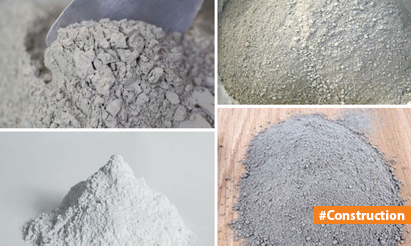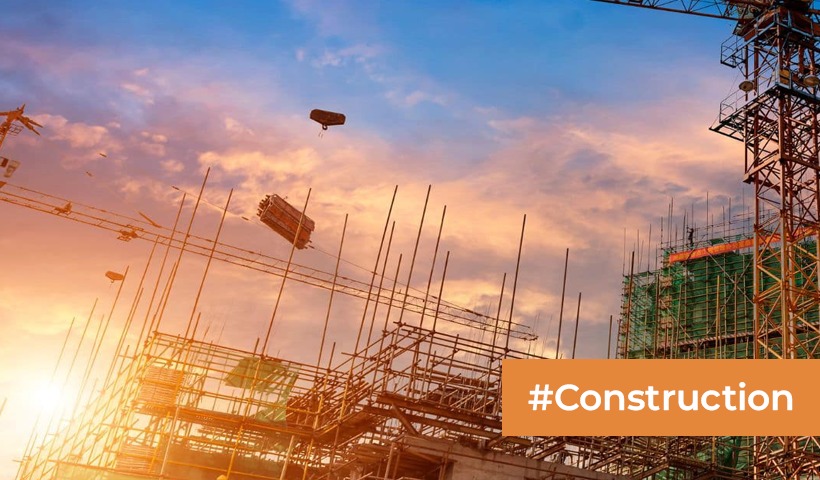Bhoomi Pooja Muhurat Dates in 2024 for House Construction
In the rich tapestry of Indian traditions, the Bhoomi Pooja ceremony holds immense significance, especially when embarking on the journey of building a New Home. Choosing an auspicious time for Bhoomi Pooja is deeply rooted in Vedic astrology and cultural beliefs. This article aims to guide Indian readers through the Bhoomi Pooja Muhurat dates in 2024, providing insights into the auspicious timings for initiating house construction and embracing positive energies.
What is Bhoomi Pooja?
Bhoomi Pooja, also known as Bhumi Puja, is a traditional Hindu ritual performed to honor and seek blessings from the earth deity before commencing construction activities. This ceremony is believed to purify the land, remove any negative energies, and ensure a harmonious and prosperous building process. Conducted with offerings, prayers, and the chanting of Vedic hymns, Bhoomi Pooja is typically led by a priest. It signifies respect for nature and acknowledges the importance of the land in Hindu culture, fostering a sense of gratitude and reverence.
Significance of Bhoomi Pooja
Bhoomi Pooja is a vital Hindu ritual performed before starting any construction work. It honors and seeks blessings from the earth deity, purifying the land and eliminating negative energies. The ceremony includes offerings, prayers, and Vedic hymns, led by a priest. This ritual signifies respect for nature, ensures a prosperous construction process, and fosters gratitude for the land, which is considered sacred in Hindu culture.
Vedic Astrology and Muhurat
Vedic astrology determines auspicious dates and times, known as Muhurat, for significant events like Bhoomi Pooja. Choosing the right Muhurat ensures positive outcomes and harmony, aligning the ceremony with favorable cosmic energies.
Best months to start building a house as per vastu in 2024
According to Vastu Shastra, the best months to start building a house in 2024 are:
- Magha (January – February): An auspicious month in the Hindu calendar, aligning with the end of January and most of February in the Gregorian calendar.
- Vaishakha (April – May): Falling between April and May, this period is considered highly favorable for construction activities.
- Shravana (July – August): Spanning July and August, Shravana is another ideal time for commencing building projects as per Vastu principles.
- Kartik (October – November): This month, occurring between October and November, is also deemed auspicious for starting construction.
Best Nakshatras for Bhoomi Pooja in 2024
Choosing the right Nakshatra for Bhoomi Pooja is essential for ensuring prosperity and success in construction. Here are the auspicious Nakshatras for Bhoomi Pooja in 2024:
- Rohini
- Mrigashirsha
- Chitra
- Anuradha
- Revati
- Uttara Phalguni
- Uttara Ashadha
- Uttara Bhadrapada
- Dhanishta
- Shravana
Shubh Tithis for Bhoomi Pooja in 2024
Selecting a Shubh Tithi (auspicious date) for Bhoomi Pooja ensures a prosperous and harmonious start to construction. Here are the auspicious Tithis for Bhoomi Pooja in 2024 :
- Pratipada
- Dwitiya
- Tritiya
- Panchami
- Saptami
- Dashami
- Ekadashi
- Dwadashi
Bhoomi Pooja Dates in 2024 – Monthwise
Planning your Bhoomi Pooja on auspicious dates is crucial for ensuring success and harmony in your construction project. Here are the month-wise Bhoomi Pooja dates for 2024:
| Month | Dates |
| January | 12, 15, 18, 25 |
| February | 3, 6, 9, 24 |
| March | 2, 5, 10, 18 |
| April | 1, 8, 12, 21 |
| May | 3, 7, 14, 28 |
| June | 1, 9, 11, 20 |
| July | 4, 7, 13, 25 |
| August | 2, 8, 16, 30 |
| September | 1, 5, 12, 19 |
| October | 3, 10, 14, 27 |
| November | 2, 6, 9, 20 |
| December | 1, 5, 10, 15 |
Bhoomi Pooja Dates and Muhurat 2024
Planning your Bhoomi Pooja on auspicious dates and times (Muhurat) is essential for ensuring success and harmony in your construction project. Here are the month-wise Bhoomi Pooja dates and Muhurat for 2024:
| Month | Date | Muhurat Time |
| January | 12, 15, 18, 25 | 07:30 AM – 09:00 AM |
| February | 3, 6, 9, 24 | 08:00 AM – 09:30 AM |
| March | 2, 5, 10, 18 | 09:00 AM – 10:30 AM |
| April | 1, 8, 12, 21 | 07:00 AM – 08:30 AM |
| May | 3, 7, 14, 28 | 08:30 AM – 10:00 AM |
| June | 1, 9, 11, 20 | 06:30 AM – 08:00 AM |
| July | 4, 7, 13, 25 | 07:00 AM – 08:30 AM |
| August | 2, 8, 16, 30 | 08:00 AM – 09:30 AM |
| September | 1, 5, 12, 19 | 07:30 AM – 09:00 AM |
| October | 3, 10, 14, 27 | 06:00 AM – 07:30 AM |
| November | 2, 6, 9, 20 | 07:00 AM – 08:30 AM |
| December | 1, 5, 10, 15 | 08:30 AM – 10:00 AM |
Inauspicious time for Bhoomi Pooja Muhurat in 2024
Choosing an inauspicious time for Bhoomi Pooja can bring negative energies and obstacles to your construction project. It is crucial to avoid these months for the ceremony. Here are the inauspicious months for Bhoomi Pooja in 2024:
| Month | Reason for Inauspiciousness |
| March | Holashtak |
| June | Aashad Maas |
| July | Chaturmas |
| August | Chaturmas |
| September | Pitru Paksha |
| October | Pitru Paksha |
| November | Karthika Maas |
What is the Bhoomi Pooja Vidhi?
Bhoomi Pooja Vidhi is a traditional Hindu ritual performed to seek the blessings of the earth deity before beginning construction. Here is a step-by-step guide to performing the Bhoomi Pooja:
- Selection of the Muhurat: Consult a priest or an astrologer to select an auspicious date and time (Muhurat) for the ceremony based on Vedic astrology.
- Preparation of the Site: Clean the construction site thoroughly. Decorate the area with flowers, rangoli, and mango leaves. Set up a temporary altar with an idol or picture of Lord Ganesha, as he is worshiped first in all Hindu rituals.
- Sankalpa (Vow): The head of the family or the person performing the Pooja takes a vow (Sankalpa) to conduct the ceremony with sincerity and devotion, seeking blessings for the successful completion of the construction project.
- Ganesh Puja: Begin the ritual by worshiping Lord Ganesha to remove obstacles and ensure a smooth process. Offer flowers, fruits, sweets, and light incense sticks and lamps.
- Kalash Sthapana: Place a copper pot (Kalash) filled with water, mango leaves, and a coconut on the altar. This symbolizes the presence of all deities and their blessings.
- Invocation of Deities: Invoke the blessings of the earth deity, Goddess Bhoomi, and other deities by chanting Vedic mantras and hymns. Offerings such as rice, flowers, turmeric, sandalwood paste, and betel leaves are made.
- Havan (Fire Ritual): Perform a Havan by lighting a sacred fire and offering ghee, grains, and other sacred materials while chanting mantras. This purifies the environment and invokes divine blessings.
- Bhoomi Puja: The priest performs the main Bhoomi Puja by worshiping the land. A small pit is dug at the construction site, and offerings such as milk, honey, curd, ghee, and water are poured into it. The pit is then filled with a mixture of sand, cow dung, and water.
- Symbolic Start of Construction: Place the first stone or brick at the designated spot, symbolizing the beginning of the construction work. This is usually done by the head of the family or the person in charge of the project.
- Prasad Distribution: Conclude the ceremony by distributing Prasad (blessed food) to all attendees, signifying the successful completion of the ritual.
- Conclusion: Offer final prayers and seek blessings for the prosperity and safety of the construction project. Thank the priest and all participants for their involvement.
Performing Bhoomi Pooja with devotion and following the traditional Vidhi ensures a harmonious and successful start to your construction project.
Factors to Consider
1. Regional Variations
It’s essential to note that Muhurat timings can vary based on geographical locations. Consulting with local priests or astrologers familiar with regional customs can help in determining the most accurate timings.
2. Personal Astrology
Individuals may also consider their personal astrology charts for added guidance. Some families prefer consulting their family astrologers to align the ceremony with favorable planetary positions specific to their horoscopes.
3. Weather Conditions
Practical considerations such as weather conditions should not be overlooked. Choosing a time when the weather is conducive to construction work can contribute to a smoother process.
Rituals and Customs of Bhoomi Pooja
1. Puja Preparations
Before the Bhoomi Pooja, it’s customary to clean the construction site and perform a preliminary puja to purify the space.
2. Hawan (Sacred Fire)
The Bhoomi Pooja ceremony typically involves the lighting of the sacred fire, symbolizing purity and divine blessings. Offerings such as grains, fruits, and flowers are made to the fire.
3. Mantras and Prayers
Recitation of specific mantras and prayers dedicated to Lord Ganesha and the Earth Goddess is a central part of Bhoomi Pooja. Seeking their blessings is believed to bring prosperity and protection to the construction project.
What should be avoided During Bhoomi Pooja
During Bhoomi Pooja, avoid conducting the ceremony during inauspicious times or months such as Holashtak, Chaturmas, and Pitrupaksha. Refrain from using damaged or impure items for offerings. Ensure the site is clean and free from any negative influences. Additionally, avoid performing the ritual without the guidance of a knowledgeable priest.
Best Time for House Construction in India
The ideal time for house construction in India is typically during the months of Magha (January-February), Vaishakha (April-May), Shravana (July-August), and Kartik (October-November). These periods are considered auspicious as per Vastu Shastra and Vedic astrology, ensuring prosperity, stability, and harmony in the new home.
Conclusion
Incorporating the right Bhoomi Pooja dates, Muhurat, and following traditional rituals can significantly impact the success and harmony of your construction project. By adhering to these guidelines, you ensure a prosperous and auspicious beginning, aligning your efforts with positive cosmic energies for a successful outcome.
FAQs
Which days are auspicious for Bhoomi Pooja?
Auspicious days for Bhoomi Pooja typically include Monday, Wednesday, Thursday, and Friday. These days are considered favorable according to Vedic astrology and are believed to bring positive energies to the construction project.
Which Nakshatras are good for performing Bhoomi Pooja?
The best Nakshatras for performing Bhoomi Pooja are:
- Rohini
- Mrigashirsha
- Chitra
- Anuradha
- Revati
- Uttara Phalguni
- Uttara Ashadha
- Uttara Bhadrapada
- Dhanishta
- Shravana
Which tithi is good for Bhoomi Pooja?
Auspicious Tithis for Bhoomi Pooja include:
- Pratipada
- Dwitiya
- Tritiya
- Panchami
- Saptami
- Dashami
- Ekadashi
- Dwadashi
Which months are considered good for Bhoomi Pooja?
The best months for Bhoomi Pooja are:
- Magha (January – February)
- Vaishakha (April – May)
- Shravana (July – August)
- Kartik (October – November)
What items are required for Bhoomi Pooja?
Items required for Bhoomi Pooja typically include:
- Idol or picture of Lord Ganesha
- Copper pot (Kalash) with water and mango leaves
- Coconut
- Flowers, fruits, and sweets
- Incense sticks and lamps
- Sandalwood paste and turmeric
- Rice, betel leaves, and betel nuts
- Ghee, grains, and other offerings for Havan
- Clean cloth and a small shovel for digging the pit
Disclaimer: The views expressed above are for informational purposes only based on industry reports and related news stories. PropertyPistol does not guarantee the accuracy, completeness, or reliability of the information and shall not be held responsible for any action taken based on the published information.




